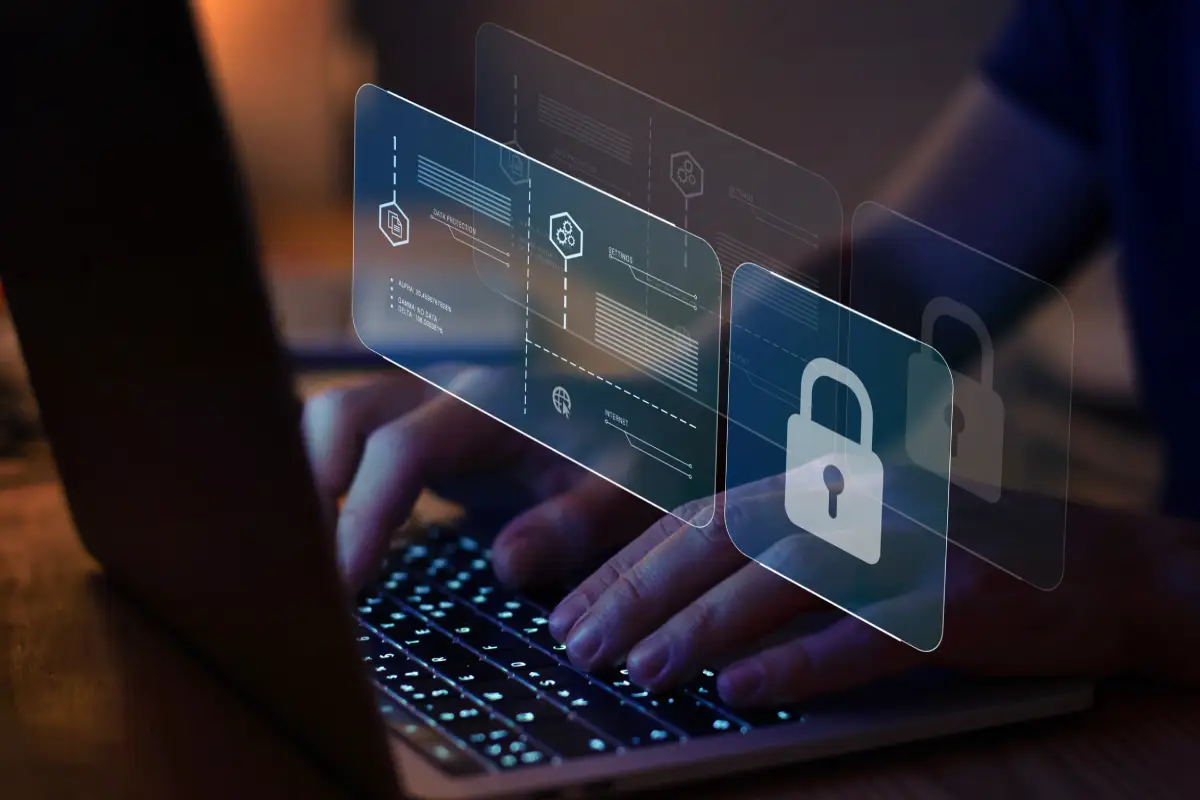Crafting a Comprehensive Cybersecurity Content Marketing Strategy
A content-centric cybersecurity marketing strategy is vital for cybersecurity brands to connect with their audience and drive business growth. You should revamp traditional methods to create a more audience-centric approach. This guide will help cybersecurity content marketers create a strategy that resonates with technical and non-technical audiences, fostering deeper engagement and achieving marketing objectives.
Understanding Your Audiences
Define Your Personas
Developing detailed personas is more than just a task. It’s a powerful tool that empowers you to understand and address the unique needs of your audience. Personas help tailor your content to address specific pain points, challenges, and goals. Here’s how to create effective personas:
- Identify Pain Points: Pinpoint your target audience’s main challenges and obstacles. Your messaging can solve these pain points.
- Conduct Research: Collect data to understand your audience’s needs and preferences.
- Focus on Characteristics: Emphasize humanizing characteristics over basic demographics to connect more deeply with your audience.
- Regular Updates: Continuously update personas to reflect industry changes and audience feedback.
Understand Information Sources
Knowing where your audience consumes information is crucial. This insight allows you to tailor content to the proper channels. Technical audiences prefer detailed, technical content on specialized forums or industry publications, while non-technical stakeholders seek simpler, high-level information on mainstream business platforms.
Crafting Your Brand Identity
Build an Emotional Connection
Creating an emotional connection with your audience helps build stronger relationships. Your brand identity should reflect the values and messages that resonate with your audience. Consider whether your messaging overly focuses on product features or if it tells a story that addresses your audience’s needs and aspirations. Position your audience as the hero in your brand’s narrative, highlighting how your solutions can help them solve their problems.
Produce Story-Driven Content
Incorporating storytelling into your content makes it more relatable. Don’t tell your audience what a product does. Tell them a story about who they will be when they use it. This approach helps shape your brand identity to resonate with your audience’s perceptions and needs, fostering a deeper connection.
Developing a Content Strategy Framework
Map the Buyer’s Journey
Your content strategy should guide your audience through the buyer’s journey, from awareness to decision-making. Here’s how to effectively map this journey:
- Topic Selection: Choose topics and questions relevant to your audience’s early awareness stages.
- Content Mapping: Provide supportive and helpful content as they progress through the buyer’s journey, addressing complexities and common questions.
- Strategy Review: Regularly revisit and update your strategy to adapt to the constantly changing cybersecurity landscape.
Take a Flexible and Dynamic Approach
Maintaining a flexible content marketing strategy lets your brand stay on top of the latest topics and trends, responding dynamically to industry shirts. This agility helps maintain relevance and provides continuous connection opportunities between your audience and your brand.
Choosing the Right Content Types
Put the Audience First
Prioritize your audience in your content creation process. Avoid fear, uncertainty, and doubt (FUD) tactics and focus on building trust-based relationships. Essential content pieces for an audience-driven approach include:
- Buyer’s Guide: Offer comprehensive industry and product overviews to help your audience make informed purchasing decisions.
- ROI-Driven Content: Highlight the return on investment (ROI) your solution offers. Use case studies and testimonials.
- Cost of Inaction: Emphasize the risks and impacts of not adopting your cybersecurity solution.
Share a Variety of Content
Use various content types to cater to different stages of the customer journey and preferences. Regularly update and revise your content to stay relevant in the evolving cybersecurity landscape. If you create content on what is insider threat detection topic, tailor it to various customer journey stages and keep it updated to stay relevant in the evolving cybersecurity landscape.
Write Technical Content for Experts
Technical professionals seek in-depth, detailed content demonstrating the efficacy of cybersecurity solutions. Whitepapers, technical webinars, and case studies can provide valuable insights into product capabilities and real-world applications. Collaborate with subject matter experts to produce technically accurate and compelling content.
Share Simplified Content with Decision-Makers
Non-technical stakeholders, such as business leaders and executives, require simplified content that clearly explains the business benefits of cybersecurity solutions. Use case studies, testimonials, and ROI-driven content to highlight your products’ practical advantages and risk mitigation aspects.
Utilizing Multi-Channel Strategies
Publish Platform-Specific Content
To effectively reach both technical and non-technical audiences, employ a multi-channel approach. Platforms like LinkedIn are excellent for sharing thought leadership articles and whitepapers, while YouTube and other video-sharing platforms can host technical demonstrations and webinars.
Optimize for the Algorithm
Optimize your content for search engines to ensure it reaches the right audience. Use relevant keywords and focus on technical terms for engineers and general cybersecurity topics for business leaders.
Use Email Marketing
Segment your email lists based on audience personas to deliver targeted content. Technical newsletters can include updates on security threats and technical whitepaper summaries, while more casual newsletters focus on business implications and success stories.
Measuring Success and Adapting
Stick to Your Key Performance Indicators (KPIs)
Establish KPIs that reflect both technical and non-technical audience engagement. For technical content, track whitepaper downloads, webinar attendance, and engagement rates on technical blogs. For non-technical content, focus on metrics such as case study downloads, testimonial views, and overall content shares.
Solicit Audience Feedback
Gather and analyze feedback regularly to understand what content resonates most with your audience. Use surveys, feedback forms, and direct interactions to refine your content strategies.
Continuously Improvement
Stay informed about industry trends and continuously update your knowledge to keep your content current and valuable. Regularly adapt your strategies based on these insights.
Leveraging Analytics for Better Insights
Make Data-Driven Decisions
Utilize analytics tools to gather data on your content’s performance. Analyze metrics such as page views, time spent on content, bounce, and conversion rates to identify what works and needs improvement. This data-driven approach allows you to make informed decisions and refine your strategy.
Heatmaps show User Behavior
Heatmaps and user behavior analytics provide insights into how your audience interacts with your content. Understand which parts of your content are engaging and which sections need adjustments to improve readability and engagement.
Try a Few Ideas
Conduct A/B testing to experiment with different content formats, headlines, and calls to action. This testing helps determine which variations resonate best with your audience, allowing for continuous optimization and improvement. But only A/B test one variable at a time for the most accurate results.
Personalization and Automation
Tailor Content Experiences
Personalize your content to cater to individual audience preferences and behaviors and instill confidence in your audience. Use data and insights to create personalized content journeys that address specific needs and interests. Personalization enhances engagement and fosters a deeper connection with your audience.
Use Automation
Implement marketing automation tools to streamline your content delivery. Automated workflows can help nurture leads, send targeted emails, and deliver relevant content at the right time. Automation ensures consistent communication and saves time for your marketing team.
Collaboration and Partnerships
Collaborate Internally
Foster collaboration between your marketing team and other departments, such as sales, customer support, and product development. Collaboration ensures that your content is aligned with overall business goals and effectively addresses customer pain points.
Lean on Industry Partnerships
Form partnerships with industry experts, influencers, and other cybersecurity companies. Collaborating with external partners can expand your reach, provide valuable insights, and enhance your content’s credibility.
Future Trends in Cybersecurity Content Marketing
Comment on Emerging Technologies
Stay ahead of emerging technologies and trends in the cybersecurity landscape. Topics such as artificial intelligence (AI), machine learning, and blockchain are gaining traction and can provide fresh content opportunities. Highlight how your solutions integrate with these technologies to stay relevant and forward-thinking. Consider asking your leadership to publish their thoughts on emerging trends.
Interact with Your Audience
Interactive content, such as quizzes, assessments, and infographics, can engage your audience deeper. These formats encourage active participation and provide a more immersive content experience.
Try Multimedia Content
Video content continues to grow in popularity and effectiveness. Create engaging video content, such as explainer videos, customer testimonials, and product demonstrations, to capture your audience’s attention and convey complex information succinctly.


Leave a Reply